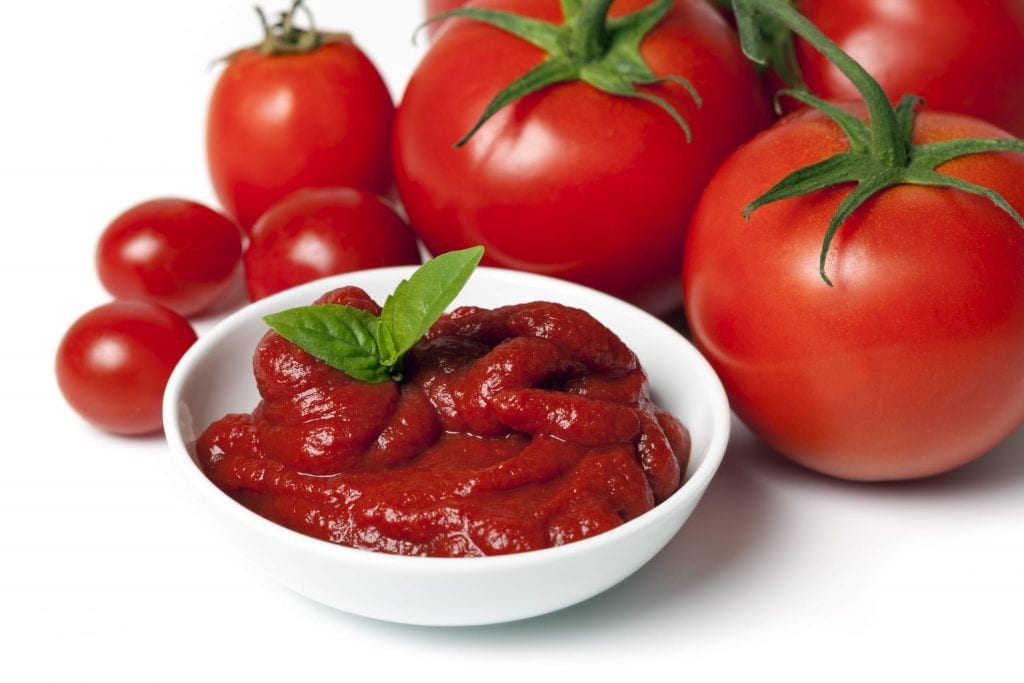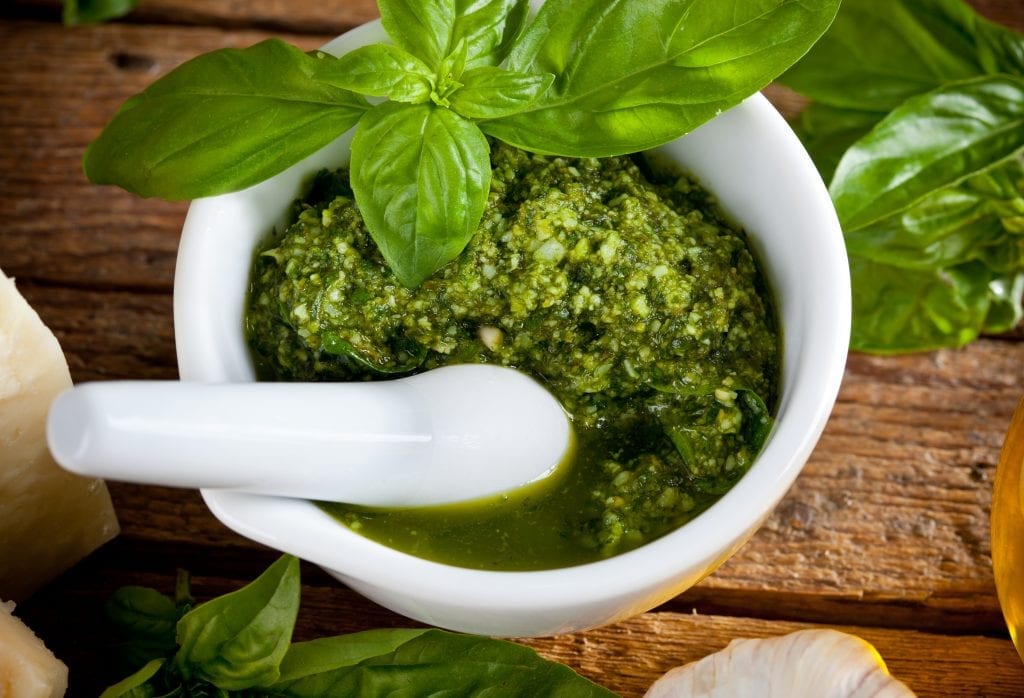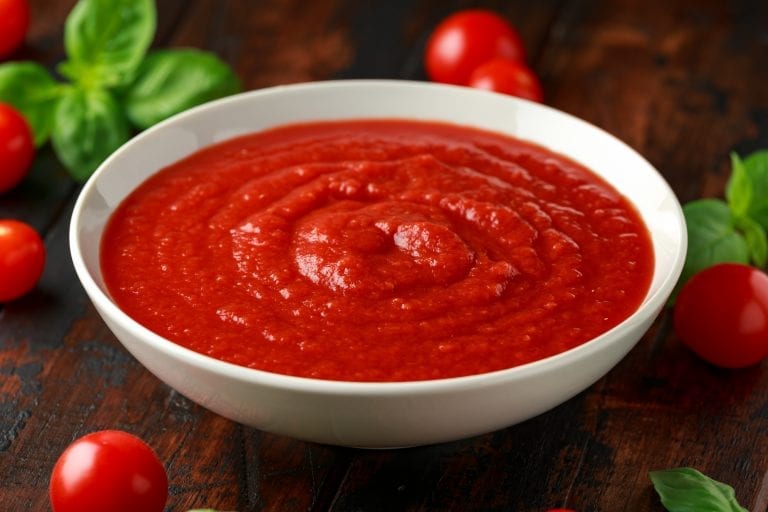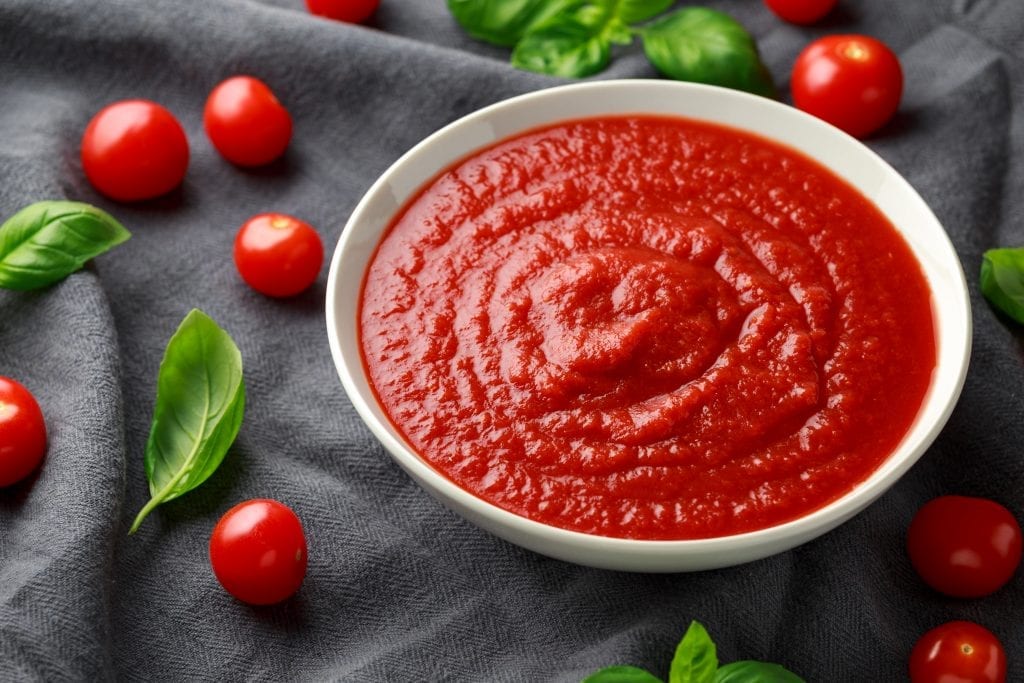Once a fixture in every home, today a custom that is making a comeback thanks to the passion for good food and a return to homemade production: the preparation of tomato puree or tomato paste is a tradition shared throughout the Italian peninsula. But among the savoury preserves in the pantry, there are also ready-to-serve pesto to flavour pasta dishes, timbales and other courses.
Tomato puree: tomato makes its entrance in Europe
Silky and velvety texture, sweet and sour flavours, garden scents and summer memories: tomato puree is an essential product in Italian cuisine, irreplaceable for meat-based and full-bodied sauces, but also for fish recipes, soups and, of course, pizza. It is a more or less dense sauce, made from different varieties of tomatoes (for more information: The best tomatoes for pureeing), cooked and pureed until creamy, often garnished with some fresh basil leaves. But before getting to the puree, we need to go back in time to the arrival of tomato in Europe: a journey that began in Latin America, particularly Mexico and Peru, with the xitomatl, the Aztec name that later gave rise to the English word "tomato", retained in Europe after the discovery of the New World in 1492.
From tomato to puree
According to the 1544 classification of the Sienese herbalist Pietro Andrea Mattioli, tomato was initially labelled as non-edible, until it was first eaten fried in southern Italy. Between the end of the 16th and the beginning of the 17th century, it became object of study of alchemists, who believed it had aphrodisiac properties, until it became an integral part of southern European cuisine – England and France above all – from the 18th century onwards. The practice of canning was started by the peasants of Parma, who used to place tomatoes in the sun to let them dry, before turning them into sauce. In Italy this tradition gave rise to a widespread network of manufacturing industries. The first one was established in Naples, thanks to the entrepreneur Francesco Cirio, still one of the best-known names in the large-scale retail trade: he was responsible for the introduction of the airtight food preservation invented by Nicolas Appert in the 18th century.

Tomato paste: industrial and homemade versions
The spread of tomato preserves in Italy is often linked to the big industrial brands. Even the industrial version of tomato paste originated in the province of Parma: its success dates back to the 1950s, when the Mutti company of Montechiarugolo began to market tomato paste in tubes. The difference with puree? The concentration, as the name suggests. It is a product obtained from heated tomato juice in order to reduce the water content: the result is a thicker paste with a strong flavour. The three variants available differ from each other for the level of sugar concentration, giving rise to concentrate, double concentrate and triple concentrate tomato paste. There are several homemade versions, prepared in different ways according to regional traditions (among the most famous there is the Sicilian strattu), used to add flavour to soups, minestrone, meat sauces or preparations with long cooking times, such as stews and casseroles.

Pesto genovese: from the Roman moretum to today
A faithful food companion in the pantry, pesto genovese is the perfect ingredient for a quick and tasty dinner, to be used cold directly on pasta. Its preparation requires a good deal of manual skill and familiarity with the tools - the marble mortar and wooden pestle - but there is no conventional method for making it. Recipe's primordial ancestor is the Roman moretum, a mix of herbs, pecorino cheese, salt, olive oil and vinegar, although the first written records date back to the 19th century, with the volume 'La vera cuciniera genovese' by Emanuele Rossi, which mentions the sauce for the first time. But it is also believed that it is the evolution of the agliata (aggiada in Genoese dialect), made with garlic, breadcrumbs, olive oil, wine and vinegar, usually used as accompaniment to fish dishes. The ideal serving suggestions? Pasta - trofie and trenette first of all - lasagne, timbales and savoury pies.




 A small Sicilian farmer with 40 cows wins silver at the World Cheese Awards
A small Sicilian farmer with 40 cows wins silver at the World Cheese Awards Women are the best sommeliers. Here are the scientific studies
Women are the best sommeliers. Here are the scientific studies Where to eat at a farm stay in Sicily: the best addresses in the Provinces of Trapani, Palermo, and Agrigento
Where to eat at a farm stay in Sicily: the best addresses in the Provinces of Trapani, Palermo, and Agrigento Wine in cans, bottle-fermented, and alcohol free: the unstoppable change in Gen Z’s tastes
Wine in cans, bottle-fermented, and alcohol free: the unstoppable change in Gen Z’s tastes The great Bordeaux exodus of Chinese entrepreneurs: around fifty Châteaux up for sale
The great Bordeaux exodus of Chinese entrepreneurs: around fifty Châteaux up for sale







